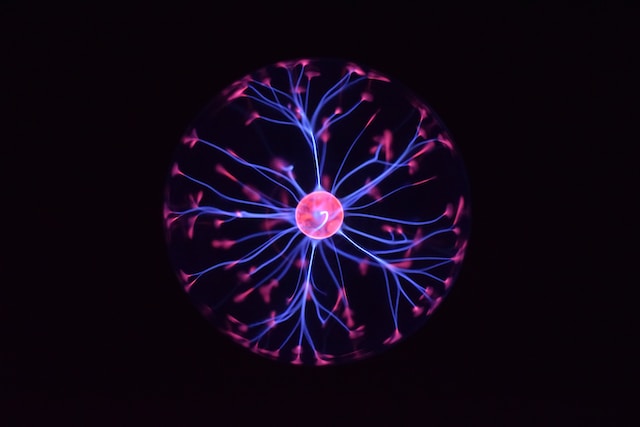The search for immortality is nothing new to humans. Human revival and resurrection ideas go back many thousand years to the Chinchorr civilization and ancient Egyptian times. Cryopreservation is the modern way of seeking immortality; how much does it intersect with the eternal seek of immorality? That’s what we are going to uncover in this article.
“To die will be an awfully big adventure” – Peter Pan, by J.M. Barrie.
Most of the ancient cultures agreed with the Scottish novelist. They saw death as an adventure, not a sudden instant. Humans challenged death as the end of everything, using science and myth to make up an adventure where death is only a transition into another phase.
With the same motivation, the modern cryonics community has approached death. While leaving all myths behind, they followed the same scientific path as our ancestors. The question is, how much better we got at doing that than they ever did. To answer that question, we need first to understand why people needed mummification in the first place?
Human decomposition: how do we decay?
Medically defined, death is the irreversible cessation of circulatory, respiratory, and entire brain function. Emotionally, it is experienced as a painful loss. It feels to most of us as an end to one’s life, the end of our connection to somebody disappearing from our lives. But, it is also a beginning, a starting point of an unpleasant journey of the diseased body into decaying.

The process of decomposition typically starts just four minutes after the actual death. And our bodies undergo six stages of decaying:
- Death: The body is not supplied with oxygen anymore, leading to a relative increase in carbon dioxide levels in body cells and consequently the accumulation of waste materials poisoning soft tissues cells.
- Initial Decay: Once the decomposition enzymes notice the poisonous cells, they dissolve them by releasing water, allowing bacterial proliferation. The process happens in the first two days.
- Bloated: That should happen during the first week. It becomes harder not to notice the extraneous signs of death in the form of emitted gasses resulting from the dissolved cells and the bacterial activity eating up body nutrients. By the end of that stage, the gas accumulation in the body will be noticed as inflation in the stomach and other soft tissue.
- Purge: Beyond the agonizing gaseous odor and the liquids leaving the bloated corpse, it starts to change color and shape. More putrefactive gasses are released through ruptures in the abdominal wall skin. Insects and maggot feeding activities reach their peak until the body completely dries. This process starts as early as the 5th day. The body’s outer skin turns orange or yellow on the bloated corpse, and predatory beetles and flies population crawl over it.
- Postdecay: The body shrinks massively as the maggots finish eating. Then, along the first month after death, the extent of the body’s decomposition becomes a function of the environment’s moisture. If the body were in the sun, the heat would kill the bacteria, and the body will mummify and completely dry up. But if the body were in the shade, bacteria would eat the body down to the skeleton.
- Dry state: About one month after death, what remains from the corpse are only bones and hair—no more bad smells or fluids to distinguish from the surrounding soil.
We might now understand why burial rituals and mummification became such a sacred practice in primitive cultures and until now. We hate to see our beloved or even imagine ourselves going through these horrifying stages. Therefore, in every culture, people tried to challenge death or at least human decomposition; to find ways to keep bodies intact, for a second chance, an afterlife. Many have tried, but few actually managed to preserve body overages. On the top of the list stand the Egyptians with their celebrated and sometimes scary mummies.
Egyptian mummification: the myth
November 26, 1922, was the beginning of the third week of excavating another royal tomb in the Valley of Kings, Upper Egypt. The team of Egyptian and British archaeologists was all eager about what could be awaiting them behind the doors of the interior chambers of king Tutankhamen.
One thing that bothered Lord Carnarvon on that warm winter day was a mosquito that appeared when they entered the tomb and kept chasing him the whole day. By the end of the day, the team was finally uncovering one of the most archeological fascinations of the world, a remarkable tomb discovery, uncovering a splendid collection of untouched treasures, along with them the marvelous mummy of the boy-king Tutankhamen. Unfortunately, exposing that 3,000 years old mummification secret came with the great loss of Lord Carnarvon himself, who has supposedly died of a bite from an infected mosquito that roamed the mummy’s tomb.

The discovery of King Tutankhamen’s mummy was not the first yet most famous revelation of deliberate mummification in ancient Egypt. Several museums around the world display the corpses of commoners, court officials, and kings who tried to defeat death and preserve their bodies for a second life.
Some common goals are shared among King Ahmose and Queen Hatshepsut on one side and James Bedford and Ted Williams on the other. However, only the latter – like many other celebrities who signed up for cryopreservation – rely purely on science to bring them back to life.
Ancient Egyptians believed in the resurrection and immortality in the afterlife. Therefore, mummification has developed in Egypt since 3500 years B.C. as the oldest discovered mommy witnesses. The Egyptian tombs hosted the deceased mummified body and mummies of their pets and were filled with life goods, tools, furniture, and treasures to accompany them on their afterlife journey.
Mummification was a sacred religious activity inspired by the death of Osiris and carried out by priests who were specialists in embalming and anatomy. But, on the other hand, Cryonics is a 100% scientific idea challenging contemporary religious thoughts, believing in another chance, a second life, a possible hereafter that could be scientifically possible here on earth.
Egyptian mummification: the science
The sophisticated mummification process took several weeks and involved unique materials like fine linen, honey, resin, and incense.
Contrary to cryopreservation, the mummification process was not concerned with keeping functional organs. Instead, the priests cared mainly for the outer body; keeping the external shape unharmed was the goal of preservation. As Rita Lucrarlli, the Egyptologist from the University of California, puts it, “In order for the spiritual part of the deceased to make this journey, the body needed to stay intact.”

The process starts with removing the internal organs of the body. Removing the brain was a highly complicated procedure; it involved extracting the brain out of the nose. Nonetheless, the heart was left untouched as it was regarded as the center of being and intelligence.
When we reviewed the latest science update on Cryopreservation, we saw how modern technologies enabled scientists to overcome the barrier of ice crystal formation using cryoprotective agents (CPAs), which can ensure slow and safe vitrification of body cells. But going back some four thousand years in history, it must have been a completely different game in the mummification labs.
Egyptian priests had to mix spices and wine to protect washed corpses from bacterial decay. In the process, the bodies were basted in natron salts for forty days after being washed out and wrapped in fine linen. Finally, the mummification is concluded with the famous mummy-wrapping of multiple cloth layers and then coated with water-resistant resin.
The scientific approach of mummification was straightforward and used only natural elements. The masters of dead-embalming art have inspired modern scientists to mimic their methodology in a modern experiment.
A research team, led by Christina Papageorgopoulou from the University of Thrace, used a donated leg of a deceased person, immersed it in a salt solution, and then measured preservation progress during mummification using microscopy and imaging techniques.
The study was a success. No fungi or bacteria have infected the leg, which was deprived of water effectively. In addition, results show that the skin and muscle tissues were well preserved, confirming the efficiency of the ancient recipe for mummification.
The modern experiment took though seven months, about five months longer than ancient Egyptian priests needed to make successful mummification. The team believes that the lab environment caused that discrepancy from the Egyptian way.
Resurrection and revival: fiction vs. science
While Cryonics researchers are highly troubled by the safe procedure for reviving cryopreserved patients and how not to damage the preserved tissues and organs while thawing them at some point in the future, Egyptians gave up on science for that part and looked on revival and resurrection from an utterly non-scientific way.
The origins of mummification are inspired by the myth of the Egyptian god of the underworld, Osiris. After the theatrical fight between Osiris and his jealous brother Seth over the reign on Earth, Osiris was killed, and his body was torn into fourteen pieces scattered all over Egypt’s land.
Death was not yet the end of Osiris. His wife Isis collaborated with her sister Nephthys to collect and bring together Osiris’s body. The corpse became the first mummy in Egypt. The body was embalmed and wrapped by Anubis, the Egyptian god of the dead. Then with the help of some magic spells, Isis manages with her resurrected husband their son to conceive Horus, who would lead the battle against Seth to bring peace and order back to the kingdom.

Deep inside, Ancient Egyptian priests didn’t expect some future priest with high-end technology who would dig up the tombs, unwrap the mummies and revive kings and queens of Egypt. Faith was the only player when it came to revival. On the contrary, our generation has witnessed the tremendous advances in science and biotechnology that make us confident to believe that research and development will cure death and potentially revive cryopreserved bodies at some point in the foreseen future.
Unintentional mummies
While Ancient Egyptians have clearly managed to steal the whole mummification show, the truth is that many other cultures have gone through the mummification path one way or another.
In fact, the oldest mummy ever on record was discovered on the other side of the world at Spirit Cave, Nevada. The mummy belonged though to another genre of mummies, the unintentional Mummies. It was found in a shallow rave, wrapped in a tule mat and marvelously preserved by a dry atmosphere. The discovery was made in 1940. The dating of the corpse determined that it was 10,600 years old. Later, DNA sequencing has deemed the remains to belong to Native American tribes.
Ice mummies are other unintentional mummies much closer to cryopreservation than Egyptian mummies. They are found in different locations worldwide, from the Alps mountains to the Andes mountains and Greenland.
People either got lost and died in icy mountains to be found thousands of years later in a preserved shape or, as in the case of the Inca children, were brought to the top of icy mountains to be sacrificed and their immortal bodies to be preserved for generations to come.
Body preservation has taken many fascinating ways in different ages and cultures. The Egyptian mummies have proven to be the most sophisticated approach, inheriting Cryonics inspiring history of human struggle towards immortality that is becoming today much more plausible than ever.














